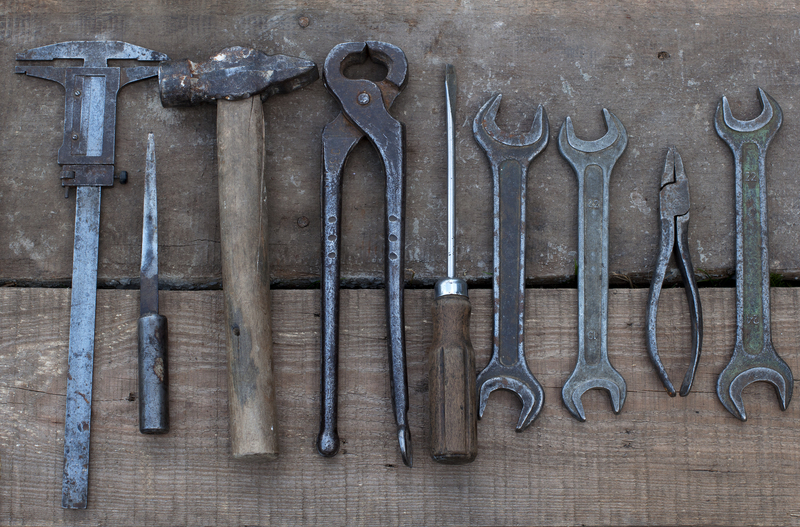Restoring Harmony at Home: The Essentials of Clutter Removal
Our homes are our sanctuaries. Yet, when clutter accumulates, the serenity we crave is replaced by stress and chaos. Decluttering is about more than just having a tidy home; it's about creating an environment that supports your well-being. In this article, we explore the essentials of clutter removal, providing practical steps and expert insights to help you restore balance and harmony in your living space.
Why Clutter Removal Matters for Harmony at Home
Clutter doesn't only occupy physical space--it also takes up mental and emotional bandwidth. Numerous studies have linked a cluttered home to increased stress, anxiety, and even reduced productivity. Understanding the importance of removing clutter from your home is the first step towards reclaiming your space and peace of mind.
- Enhances focus: A tidy space reduces distractions, aiding concentration and productivity.
- Reduces stress: An organized home fosters a sense of calm and order.
- Boosts well-being: A clutter-free environment positively affects your mood and mental health.
- Improves relationships: Shared spaces are more peaceful when they're organized.
The Psychology of Clutter
It's crucial to recognize that clutter isn't just about overflowing drawers or packed garages. It reflects our emotions, habits, and even our decision-making patterns. By understanding why we accumulate clutter, we can make more informed choices and practice mindful living.

Assessing Your Space: Where Does Clutter Lurk?
Before tackling the mess, take a tour of your home. Clutter can hide in unexpected places. Here are the most common hotspots:
- Kitchens: Overstuffed pantries, overflowing cabinets, and miscellaneous gadgets.
- Living Rooms: Magazine stacks, unused decor, and tangled cords.
- Bedrooms: Clothes you never wear, unread books, nightstand odds-and-ends.
- Bathrooms: Expired products and unnecessary duplicates.
- Garages/Basements: Old tools, forgotten toys, and postponements of decision-making.
Begin with a single room or zone. Observe what items serve a purpose and what merely occupy space. Taking inventory is a critical first step in the clutter removal process.
Declutter vs. Organize: Knowing the Difference
Many people mistakenly believe organizing is decluttering. Organizing is about arranging what you have; decluttering is about reducing what you own. To truly restore harmony at home, focus first on removing unnecessary possessions, then organize what remains.
- Step 1: Remove - Eliminate items you no longer need, use, or love.
- Step 2: Arrange - Designate specific homes for remaining items.
- Step 3: Maintain - Regularly evaluate and adjust to prevent future accumulation.
Step-by-Step Guide to Effective Clutter Removal
1. Set Clear Goals for Decluttering
Ask yourself: What do I want to achieve? Whether it's creating a calming living room or streamlining your kitchen, define your end vision. Take before photos--they provide both perspective and motivation.
2. Schedule Clutter Removal Sessions
Decluttering doesn't happen overnight. Dedicate specific time slots to the process. Even 20 minutes a day can lead to remarkable results over time.
3. Sort Items Ruthlessly
- Keep: Items that are useful and bring you joy.
- Donate/Sell: Gently used items you no longer want.
- Recycle: Items made of recyclable material.
- Trash: Broken, expired, or unusable items.
Be honest. If you haven't used something in a year--and it doesn't have significant sentimental value--consider letting it go.
4. Organize What Remains
Once clutter is gone, assign every item a "home". Use labelled bins, drawer organizers, or shelves as needed. Group similar things together for easy access.
5. Establish Daily Tidying Habits
To maintain your decluttered haven, adopt micro-habits:
- Put items away immediately after use
- Sort mail and paper daily
- Spend five minutes at the end of each day resetting your main living areas
Top Clutter Removal Tips from the Pros
Make It Manageable
Instead of attempting your whole home at once, break the process into manageable zones. Focus on a single drawer, shelf, or corner each session.
Use the Four-Box Method
- Keep - To remain in the room
- Donate - To give away
- Store--To relocate elsewhere
- Trash--To discard
Physically moving your choices into boxes makes decisions more tangible.
Practice the "One In, One Out" Rule
Every time you bring something new into your home, find one item to remove. This simple habit prevents the slow return of unnecessary clutter.
Reduce Sentimental Clutter
Sentimental items are the hardest to part with. Select a few treasures to display or store thoughtfully, then photograph or write about the rest. Remember, memories are not dependent on objects.
Invest in Smart Storage Solutions
- Shelving and vertical storage to maximize space
- Under-bed bins for seasonal items
- Clear organizers for visibility
Effective storage helps maintain order and keeps clutter at bay.
Enlist Help When Needed
If you feel overwhelmed by your belongings, seek support from family, friends, or professional organizers. A fresh perspective can make all the difference.
The Hidden Benefits of Decluttering Your Home
- Increased Productivity: A clean environment supports clear thinking and efficiency.
- Better Health: Less dust and mold equals improved air quality.
- Financial Clarity: Know exactly what you own, prevent unnecessary purchases.
- More Space: Room for creativity, activities, and relaxation increases.
- Enhanced Aesthetics: A visually pleasing, sparkling home is more inviting.
Common Clutter Removal Mistakes to Avoid
- Tackling Too Much at Once: Overwhelm leads to burnout. Take it step by step.
- Holding On "Just in Case": Most items kept for hypothetical situations are never used.
- Failing to Dispose Immediately: Gather donation and trash bags and remove them right away to avoid a return of clutter.
- Ignoring Maintenance: Decluttering is ongoing. Set reminders for regular check-ins.
Clutter Cleaning for Every Space in Your Home
Entryway:
- Install hooks or a rack for coats and bags
- Use trays or baskets for shoes and accessories
Kitchen:
- Limit duplicate utensils and appliances
- Sort pantry items by expiration date
Living Room:
- Minimize decorative items to essential favorites
- Hide electronics and remotes in baskets or drawers
Bedroom:
- Declutter nightstands and under-bed spaces
- Rotate seasonal clothing and donate unused pieces
Bathroom:
- Dispose of expired makeup and medication
- Keep counters clear with organized toiletry storage
Garage and Basement:
- Group tools, sports gear, and holiday decor in clear bins
- Regularly purge items you haven't used in the past year
Embracing Minimalism: A Lifestyle, Not a Chore
Adopting a minimalist mindset is about more than fewer items--it's about intentional living. Every possession should serve a purpose or bring you joy. By curating your space, you make room for what truly matters.
- Freedom from upkeep allows for more time and peace of mind
- Quality over quantity brings long-term satisfaction
- Less clutter means less stress, more harmony, and clarity in daily life
Maintaining a Clutter-Free Environment
Clutter removal is not a one-time event. Establish routines to prevent buildup:
- Monthly Mini-Declutters: Pick a room each month to refresh.
- Adopt Daily Habits: Tidy as you go, file paperwork promptly, and reset common areas before bed.
- Review Purchases: Evaluate purchases with "Do I need this?" before bringing them home.
- Stay Mindful: Regularly reflect on how your environment feels and makes you feel.

The Emotional Rewards of Clutter Reduction
A decluttered and harmonious home supports emotional health. Many people report feeling lighter, happier, and more in control after removing excess possessions. Restoring order can even improve relationships by reducing tension and creating inviting spaces to connect with loved ones.
Remember, every small effort you make towards clutter removal adds up to a healthier, more balanced home environment.
Conclusion: Start Your Journey to a Harmonious, Clutter-Free Home
Restoring harmony at home starts with the essentials of clutter removal. By understanding the impact of clutter, breaking the process into manageable steps, and shifting your mindset toward intentional living, you can reclaim not only your space but also your mental serenity and overall happiness.
Let clutter removal become an ongoing practice--not just a task, but a lifestyle. As you embrace a simpler, more organized environment, you'll notice the wonderful ripple effect on every aspect of your life--from improved well-being to a renewed sense of harmony at home.
Are you ready to begin your journey to a clutter-free, harmonious home? Every step, no matter how small, brings you closer to the calm and restful environment you deserve.